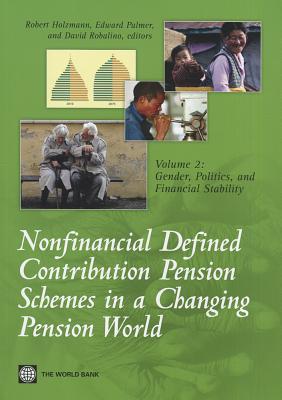
Nonfinancial Defined Contribution Pension Schemes in a Changing Pension World: Volume 2, Gender, Politics, and Financial Stability
Description
Nonfinancial Defined Contribution (NDC) schemes are now in their teens. The new pension concept was born in the early 1990s, implemented from the mid-1990s in Italy, Latvia, Poland and Sweden, legislated most recently in Norway and Egypt and serves as inspiration for other reform countries. This innovative unfunded individual account scheme created high hopes at a time when the world seemed to have been locked into a stalemate between piecemeal reforms of ailing traditional defined benefit schemes and introducing pre-funded financial account schemes.
The experiences and conceptual issues of NDC in its childhood were reviewed in a prior anthology (Holzmann and Palmer, 2006). This new anthology published in 2 volumes serves to review its adolescence and with the aim of contributing to a successful adulthood. Volume 1 on Progress, Lessons, Implementation includes a detailed analysis of the experience and the key policy lessons in the old and new pilot countries and the implementation of NDCs elements in other reform countries.
This volume 2 on Gender, Politics, Financial Stability includes deeper and new analyses of these issues that found little or no attention in the 2006 publication. The gender perspective includes 5 chapters with, perhaps, the most complete discussion on gender and pension issues available to date. The financial stability perspective addresses in 6 chapters critical micro- and macroeconomic aspects such as the balancing mechanism, the use of a reserve fund, the handling of legacy costs, and technicalities related to the management of the longevity risk when designing annuities. While the 2 volumes address many issues it also opens a number of new questions for which good answers are not yet readily available.



